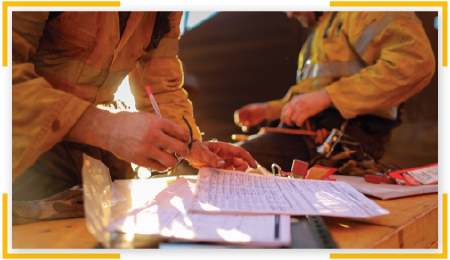Title 24 Calculation & Compliance - California
5 Days- That's a Lightning Fast Turnaround Time!
1
Upload Files and Pay
Upload PDF or CAD files, and pay to start the process. An engineer is auto-assigned to your project.
2
Document Review
An engineer will review all the documents shared and connect with you if anything else is required. Initial work starts.
3
Work Starts
Actual design/ report creation work begins.
4
Quality Check
The design and report are checked by the project manager to make sure 100% quality work is delivered.
5
Delivery
The design/ report is delivered to you.
NEED HELP OR ADDITIONAL INFORMATION?
CALL US NOW
(646) 776-4010Get Your Title 24 In 3 Easy Steps
0%
We submit your title 24 report to DOB within
5 Days
Get approval from California DOB
All in One Go
Get title 24 report for residential and commercial buildings
Save Time
Convert your propoerty into energy effiient building
Save Cost
$ 750
Title 24 Calculation
Documents Required
Floor plans in CAD, fixtures/ equipment cut sheets and quantity
Delivery Time & Standards
We deliver your report (digitally) within 5 business days as per California ECC/ NEC standards.
What's not Covered
This service does not cover site visits, stamping, DOB/DEP filing, and more than 2 minor iterations.
Service Constraint
The service fee is limited to 10,000 sq. ft.* of area only.
$750*
Title 24 Calculation


We share your Title 24 report at lightning speed.


Get approval from California DOB.


Get title 24 report for residential and commercial buildings.


Convert your property into energy efficient building.
Building Energy Efficiency Standards California- Title 24 Calculations
Building Law Compliant
Make sure your construction project meets the 2019 California Building Energy Efficiency Standards.
Faster Approvals
Get the Title 24 energy calculations and Compliance Forms approved without delays and corrections.
Energy Efficient
Find the best energy efficiency measures to meet the energy performance requirements under Title 24.


Our on-demand engineering expert
Still not sure about how to proceed?
YOU CAN WRITE TO ME AT inquiry@ny-engineers.com

California has the largest population and economy among all US states, and the second highest energy consumption after Texas. However, according to the US Energy Information Administration, the energy consumption per capita in California is among the lowest in the USA. In great part, this has been possible thanks to the Building Energy Efficiency Standards found in Title 24, Parts 6 and 11, of the California Code of Regulations (CCR).
Actually, Title 24 contains all the California state building codes, covering areas like mechanical equipment, electrical wiring and plumbing installations. However, the construction industry associates Title 24 with energy performance requirements for buildings. When architects and engineers refer to Title 24 calculations and forms, they are actually talking about the California Energy Efficiency Standards Compliance Forms.
The Title 24 forms must be submitted to the building department as part of the project approval process in California. These forms are used to document energy compliance in project designs, and they are required for building permits. The Title 24 energy requirements apply for new homes, modifications to existing homes, and commercial buildings. These requirements were originally for state-owned properties, but the code was changed to include privately-owned residential and commercial buildings.
According to the California Energy Commision (CEC), the state’s energy code was developed to “reduce wasteful and unnecessary energy consumption in newly constructed and existing buildings.” The energy codes establish a baseline, but building owners can exceed their requirements to achieve even greater energy savings.
The first version of the California Building Energy Efficiency Standards was published in 1978, which means these standards have been improving energy efficiency for over four decades. They are reviewed every three years by the California Energy Commission (CEC), and the 2019 standards replaced the 2016 version since January 1, 2020. Following the three-year update cycle, the next version will be published in 2021. The CEC conducts a public review process, where the California construction industry can provide suggestions and feedback.
Most energy efficiency measures offer an attractive return on investment, and every dollar spent on them is recovered many times. Building energy codes simply make these measures mandatory up to a specified performance level. California’s Building Energy Efficiency Standards are demanding, but they provide several benefits in residential and commercial properties:
- Lower energy consumption and reduced operating costs. Since the building energy standards were introduced in 1978, they have saved over $70 billion for homes and businesses in California.
- Improving energy availability and making the power grid more reliable, by reducing the electrical load from homes and commercial buildings. For example, if 1,000 buildings reduce power consumption by 20 kilowatts each, a total load of 20 megawatts is removed from the grid.
- Reducing emissions and the overall environmental impact of the building sector.
- Some energy efficiency measures also make indoor spaces more comfortable, and smart ventilation controls are a good example.
Thanks to the Title 24 energy efficiency standards in California, the residential and commercial sectors consume less than 20% of the state’s energy each. For comparison, the industrial sector consumes 25% of the state’s energy, while the transportation sector consumes 40%.
Building owners and real estate developers must be aware that Title 24 is strictly enforced in California. There are legal consequences for not meeting Building Energy Efficiency Standards, and the corresponding fines can exceed $5,000 per code violation. To make sure your project meets the Title 24 requirements, the best recommendation is working with a qualified engineering firm.

The Building Energy Efficiency Standards establish a minimum performance level for the residential and commercial buildings they cover. However, there are two compliance methods to choose from - the Prescriptive method and the Performance method. Each method has advantages and disadvantages.
- The Title 24 Prescriptive Method provides minimum requirements for individual building elements, equipment and components. If all the elements covered by the code are compliant, the entire building is also considered compliant.
- The Title 24 Performance Method focuses on the overall performance of the building, instead of providing individual requirements for components. When this method is chosen, the energy modeling software used to calculate performance must be certified by the California Energy Commission.
Every building project in California must meet energy efficiency standards, regardless of the calculation method, and the owner must submit a Title 24 compliance report.
The Prescriptive method is straightforward and less complex, since component specifications and energy efficiency are predetermined by the CEC. To make a residential or commercial building compliant, the owner must only make sure that all components meet the Title 24 energy requirements. However, the Prescriptive method limits design flexibility, and meeting minimum requirements for all components and equipment can be expensive. In other words, the Prescriptive method does not allow trade-offs - reducing the performance of one building system and compensating with higher performance in another area.
The Performance method provides more flexibility during the design process. As long as the building meets a minimum energy performance level as a whole, individual components are not subject to minimum requirements.
- With the performance method, the building design can balance some less efficient features by achieving a higher efficiency in other areas. Engineers can analyze the trade-offs involved in building design decisions, meeting Title 24 at an optimal cost.
- For example, large window areas reduce efficiency by increasing summer heat gain and winter heat loss. However, they can be compensated with features like a higher HVAC efficiency and lighting efficiency.
In a few words, the Building Energy Efficiency Standards in Title 24 describe a typical building that meets the minimum requirements, providing a baseline for all projects. When approving a residential or commercial building in California, its performance is compared with the baseline. To be approved, a project must have an energy performance equivalent to the baseline or higher.
For example, assume a landlord plans to upgrade all the windows in an apartment building. With the prescriptive method, it would be necessary to look for specific windows that meet all the requirements in Title 24. On the other hand, the performance method gives the owner freedom to choose any windows, and energy modeling can be used to prove code compliance.

Like most codes of its type, the 2019 California energy code covers the key aspects of building systems that determine energy consumption:
- Building envelope performance, including elements like insulation levels and windows.
- HVAC equipment, water heaters and other mechanical systems.
- Electrical installations, including lighting fixtures and lighting controls.
Title 24 calculations are normally among the last steps when planning and designing a building project in California. Since design decisions influence energy consumption, they also affect compliance. Ideally, the project scope and design specifications should be clearly defined before the Title 24 energy calculations. Otherwise, you must update the Title 24 forms with any major change, wasting time and skilled labor.
A completed Title 24 energy report validates that your proposed building design is compliant with the California Building Energy Efficiency Standards.
Every building project is unique, but normally you will need the following information for Title 24 energy calculations.
- A complete site plan that clearly shows the conditioned floor area. For projects in existing buildings, the site plan must clearly indicate new and existing areas.
- A detailed breakdown of the building floor area, by square footage and occupancy type.
- The layout and specifications of all building envelope elements: windows, doors, insulations, roofing, skylights, etc.
- HVAC design
- Hot water system design
- Lighting design, including the luminaire layout and lighting schedule
As mentioned above, the Performance method provides more flexibility when designing these building systems. The Prescriptive method follows a simpler process with no need for energy modeling, but the Performance method can achieve the highest return on investment while meeting the code.
Some cities and counties in California have set the bar higher, requiring a building energy performance at least 15% above Title 24. Meeting this condition with the Performance method is simpler:
- Certified energy modeling software is used to compare the project with the baseline building.
- If the project is at least 15% more efficient, it gets approved.
Demonstrating a 15% higher efficiency with the Prescriptive method is very difficult, and not recommended by engineering professionals. In this case, it would be necessary to demonstrate a 15% higher performance for all the components used, consuming plenty of time and making the project more expensive than necessary. Consider that Title 24 uses standard formats for all cities and counties in California, even if local requirements vary.
When modifying an existing building, additional upgrades may be necessary to meet Title 24. Consider that energy performance requirements apply for the entire property, not only the modifications. Inefficient buildings may need several energy efficiency measures to reach the code performance level and get approval for a modification.
In residential construction, the main difference between the 2016 and 2019 energy standards is that solar power is now mandatory for homes. With the new Title 24 requirements, all low-rise residential buildings must be equipped with a solar photovoltaic system.
In general, the solar PV system must be designed to meet the annual electricity consumption of the property, but there are some exceptions. For example, the system size may be limited if the local power company limits the surplus power that can be fed back to the grid. Also, rooftops are exempt if they have excessive shading that would make solar panels unproductive.
Title 24 also offers design alternatives for solar panels, such as additional energy efficiency measures, demand response, thermal energy storage and battery systems. The 2019 California energy code sets a very high performance level for the residential sector: the standards are designed to reduce home energy usage by 50%.

For commercial buildings in California, Title 24 energy calculations are are divided into three main performance areas: Building envelope compliance, mechanical compliance and lighting compliance
The energy performance of a commercial building is strongly determined by these three aspects. HVAC is normally the largest load in buildings, and its performance depends on both system specifications and the building envelope. Lighting systems are the second-largest load after HVAC in many cases. By focusing on these three areas, the Title 24 energy standards have improved commercial energy efficiency in California.
- Building envelope Title 24 calculations are necessary for any new commercial project. They also apply for any renovations that affect an existing envelope, and renovations that change the conditioned floor space in a building.
- Mechanical Title 24 calculations are required for new HVAC installations, and any additions or modifications to existing systems. Keep in mind that this includes equipment upgrades: even if you will install the most efficient HVAC units in the market, you must prove Title 24 compliance.
- Lighting Title 24 calculations are necessary for any new lighting installations or modifications to existing systems, and the project must meet the California Lighting Standards. Generally, you can achieve the highest possible efficiency by combining daylighting, LED fixtures and smart lighting controls.
Residential buildings with 4 or more habitable floors are considered high-rise under Title 24, and they must follow the commercial requirements of the California energy code. On the other hand, mixed-use buildings with less than 10% residential area must follow the commercial standards. However, a commercial building expansion that will be used only for residential purposes can be designed with the residential energy standards.
Title 24 Calculations

California has the largest population and economy among all US states, and the second highest energy consumption after Texas. However, according to the US Energy Information Administration, the energy consumption per capita in California is among the lowest in the USA. In great part, this has been possible thanks to the Building Energy Efficiency Standards found in Title 24, Parts 6 and 11, of the California Code of Regulations (CCR).
Actually, Title 24 contains all the California state building codes, covering areas like mechanical equipment, electrical wiring and plumbing installations. However, the construction industry associates Title 24 with energy performance requirements for buildings. When architects and engineers refer to Title 24 calculations and forms, they are actually talking about the California Energy Efficiency Standards Compliance Forms.
The Title 24 forms must be submitted to the building department as part of the project approval process in California. These forms are used to document energy compliance in project designs, and they are required for building permits. The Title 24 energy requirements apply for new homes, modifications to existing homes, and commercial buildings. These requirements were originally for state-owned properties, but the code was changed to include privately-owned residential and commercial buildings.
According to the California Energy Commision (CEC), the state’s energy code was developed to “reduce wasteful and unnecessary energy consumption in newly constructed and existing buildings.” The energy codes establish a baseline, but building owners can exceed their requirements to achieve even greater energy savings.
Overview of the Title 24 Building Energy Efficiency Standards
The first version of the California Building Energy Efficiency Standards was published in 1978, which means these standards have been improving energy efficiency for over four decades. They are reviewed every three years by the California Energy Commission (CEC), and the 2019 standards replaced the 2016 version since January 1, 2020. Following the three-year update cycle, the next version will be published in 2021. The CEC conducts a public review process, where the California construction industry can provide suggestions and feedback.
Most energy efficiency measures offer an attractive return on investment, and every dollar spent on them is recovered many times. Building energy codes simply make these measures mandatory up to a specified performance level. California’s Building Energy Efficiency Standards are demanding, but they provide several benefits in residential and commercial properties:
- Lower energy consumption and reduced operating costs. Since the building energy standards were introduced in 1978, they have saved over $70 billion for homes and businesses in California.
- Improving energy availability and making the power grid more reliable, by reducing the electrical load from homes and commercial buildings. For example, if 1,000 buildings reduce power consumption by 20 kilowatts each, a total load of 20 megawatts is removed from the grid.
- Reducing emissions and the overall environmental impact of the building sector.
- Some energy efficiency measures also make indoor spaces more comfortable, and smart ventilation controls are a good example.
Thanks to the Title 24 energy efficiency standards in California, the residential and commercial sectors consume less than 20% of the state’s energy each. For comparison, the industrial sector consumes 25% of the state’s energy, while the transportation sector consumes 40%.
Building owners and real estate developers must be aware that Title 24 is strictly enforced in California. There are legal consequences for not meeting Building Energy Efficiency Standards, and the corresponding fines can exceed $5,000 per code violation. To make sure your project meets the Title 24 requirements, the best recommendation is working with a qualified engineering firm.
How to Meet Title 24 Energy Efficiency Standards in California

The Building Energy Efficiency Standards establish a minimum performance level for the residential and commercial buildings they cover. However, there are two compliance methods to choose from - the Prescriptive method and the Performance method. Each method has advantages and disadvantages.
- The Title 24 Prescriptive Method provides minimum requirements for individual building elements, equipment and components. If all the elements covered by the code are compliant, the entire building is also considered compliant.
- The Title 24 Performance Method focuses on the overall performance of the building, instead of providing individual requirements for components. When this method is chosen, the energy modeling software used to calculate performance must be certified by the California Energy Commission.
Every building project in California must meet energy efficiency standards, regardless of the calculation method, and the owner must submit a Title 24 compliance report.
The Prescriptive method is straightforward and less complex, since component specifications and energy efficiency are predetermined by the CEC. To make a residential or commercial building compliant, the owner must only make sure that all components meet the Title 24 energy requirements. However, the Prescriptive method limits design flexibility, and meeting minimum requirements for all components and equipment can be expensive. In other words, the Prescriptive method does not allow trade-offs - reducing the performance of one building system and compensating with higher performance in another area.
The Performance method provides more flexibility during the design process. As long as the building meets a minimum energy performance level as a whole, individual components are not subject to minimum requirements.
- With the performance method, the building design can balance some less efficient features by achieving a higher efficiency in other areas. Engineers can analyze the trade-offs involved in building design decisions, meeting Title 24 at an optimal cost.
- For example, large window areas reduce efficiency by increasing summer heat gain and winter heat loss. However, they can be compensated with features like a higher HVAC efficiency and lighting efficiency.
In a few words, the Building Energy Efficiency Standards in Title 24 describe a typical building that meets the minimum requirements, providing a baseline for all projects. When approving a residential or commercial building in California, its performance is compared with the baseline. To be approved, a project must have an energy performance equivalent to the baseline or higher.
For example, assume a landlord plans to upgrade all the windows in an apartment building. With the prescriptive method, it would be necessary to look for specific windows that meet all the requirements in Title 24. On the other hand, the performance method gives the owner freedom to choose any windows, and energy modeling can be used to prove code compliance.
What Is Covered by the Title 24 California Energy Code?

Like most codes of its type, the 2019 California energy code covers the key aspects of building systems that determine energy consumption:
- Building envelope performance, including elements like insulation levels and windows.
- HVAC equipment, water heaters and other mechanical systems.
- Electrical installations, including lighting fixtures and lighting controls.
Title 24 calculations are normally among the last steps when planning and designing a building project in California. Since design decisions influence energy consumption, they also affect compliance. Ideally, the project scope and design specifications should be clearly defined before the Title 24 energy calculations. Otherwise, you must update the Title 24 forms with any major change, wasting time and skilled labor.
A completed Title 24 energy report validates that your proposed building design is compliant with the California Building Energy Efficiency Standards.
Every building project is unique, but normally you will need the following information for Title 24 energy calculations.
- A complete site plan that clearly shows the conditioned floor area. For projects in existing buildings, the site plan must clearly indicate new and existing areas.
- A detailed breakdown of the building floor area, by square footage and occupancy type.
- The layout and specifications of all building envelope elements: windows, doors, insulations, roofing, skylights, etc.
- HVAC design
- Hot water system design
- Lighting design, including the luminaire layout and lighting schedule
As mentioned above, the Performance method provides more flexibility when designing these building systems. The Prescriptive method follows a simpler process with no need for energy modeling, but the Performance method can achieve the highest return on investment while meeting the code.
Some cities and counties in California have set the bar higher, requiring a building energy performance at least 15% above Title 24. Meeting this condition with the Performance method is simpler:
- Certified energy modeling software is used to compare the project with the baseline building.
- If the project is at least 15% more efficient, it gets approved.
Demonstrating a 15% higher efficiency with the Prescriptive method is very difficult, and not recommended by engineering professionals. In this case, it would be necessary to demonstrate a 15% higher performance for all the components used, consuming plenty of time and making the project more expensive than necessary. Consider that Title 24 uses standard formats for all cities and counties in California, even if local requirements vary.
When modifying an existing building, additional upgrades may be necessary to meet Title 24. Consider that energy performance requirements apply for the entire property, not only the modifications. Inefficient buildings may need several energy efficiency measures to reach the code performance level and get approval for a modification.
Residential Title 24 Energy Calculations
In residential construction, the main difference between the 2016 and 2019 energy standards is that solar power is now mandatory for homes. With the new Title 24 requirements, all low-rise residential buildings must be equipped with a solar photovoltaic system.
In general, the solar PV system must be designed to meet the annual electricity consumption of the property, but there are some exceptions. For example, the system size may be limited if the local power company limits the surplus power that can be fed back to the grid. Also, rooftops are exempt if they have excessive shading that would make solar panels unproductive.
Title 24 also offers design alternatives for solar panels, such as additional energy efficiency measures, demand response, thermal energy storage and battery systems. The 2019 California energy code sets a very high performance level for the residential sector: the standards are designed to reduce home energy usage by 50%.
Commercial Title 24 Energy Calculations

For commercial buildings in California, Title 24 energy calculations are are divided into three main performance areas: Building envelope compliance, mechanical compliance and lighting compliance
The energy performance of a commercial building is strongly determined by these three aspects. HVAC is normally the largest load in buildings, and its performance depends on both system specifications and the building envelope. Lighting systems are the second-largest load after HVAC in many cases. By focusing on these three areas, the Title 24 energy standards have improved commercial energy efficiency in California.
- Building envelope Title 24 calculations are necessary for any new commercial project. They also apply for any renovations that affect an existing envelope, and renovations that change the conditioned floor space in a building.
- Mechanical Title 24 calculations are required for new HVAC installations, and any additions or modifications to existing systems. Keep in mind that this includes equipment upgrades: even if you will install the most efficient HVAC units in the market, you must prove Title 24 compliance.
- Lighting Title 24 calculations are necessary for any new lighting installations or modifications to existing systems, and the project must meet the California Lighting Standards. Generally, you can achieve the highest possible efficiency by combining daylighting, LED fixtures and smart lighting controls.
Residential buildings with 4 or more habitable floors are considered high-rise under Title 24, and they must follow the commercial requirements of the California energy code. On the other hand, mixed-use buildings with less than 10% residential area must follow the commercial standards. However, a commercial building expansion that will be used only for residential purposes can be designed with the residential energy standards.


